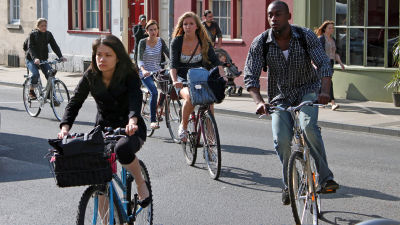Why the Netherlands is not known as "bicycle big country"
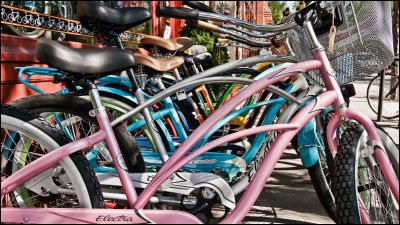
ByLaura Gilmore
Speaking of the Netherlands imagines tulips and windmills, in factSpeaking of the Netherlands bicycle, speaking of bicycles in the NetherlandsIt is also "a country of bicycle" to the extent that the Dutch Tourism Bureau appeals. In the capital city Amsterdam there are more bicycles than the number of humans, and 70% of tourists visiting The Hague are traveling by bicycle. Anna Holligan, a BBC correspondent, reports on the background that cycling became popular unexpectedly in other European countries in the Netherlands. What is the Dutch bicycle powerpower for the first time?
Why is cycling so popular in the Netherlands?
http://www.bbc.co.uk/news/magazine-23587916
Mr. Holligan investigated the reason why the Dutch people love cycling by actually traveling in the Netherlands by "Netherlands" cars called "omafiets", the cars are branch knitting and brake on the rear.
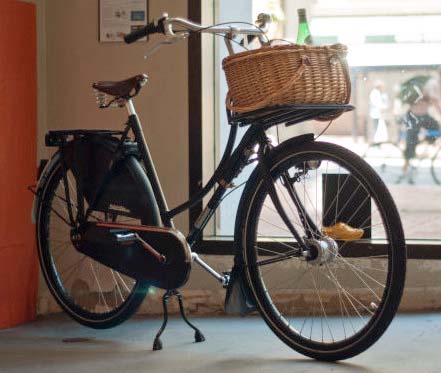
ByFrank Chan
◆ Switch to center of bicycle
Prior to the Second World War, the main means of transportation in the Netherlands was bicycles. However, in the 1950s and 1960s, as the automobile rapidly spreads, the appearance changes completely. As many European countries did, the roads in the Netherlands also began to flood the car and the bicycle was driven to the edge of the road. The dramatic increase in the number of vehicles caused an increase in the number of deaths due to traffic accidents, in 1971 the number of people who died after being hit by cars exceeded 3000, of which 450 children were among them became. As a result, social activities call for a safe cycling environment for children to happen.
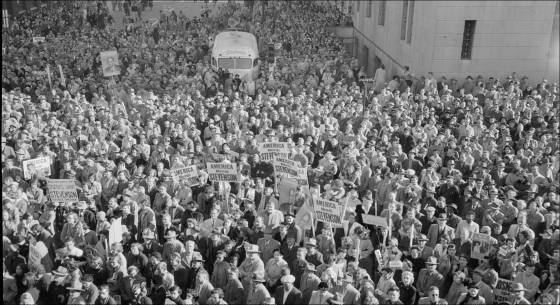
ByBoston Public Library
Furthermore, the oil crisis that occurred in 1973 greatly shakes the reliability and sustainability of the car. Oil producing countries stopped exporting oil to Western Europe, including the US and the Netherlands.
The issue of social movement and oil crisis has helped the Dutch government keep on getting involved in infrastructure development for bicycles. Urban development in the Netherlands was taken in other Western countries that urbanizedGoing out of its own way by escaping from the road construction policy of the automobile centerIt will be done.
A huge network of bicycle exclusive roads was built to make cycling safe and invite more people. The exclusive lane is clearly indicated with a sign that it is exclusively for bicycles, and the road is also paved flat. Also, enough road width was taken to be able to overtake.

In many of the cities in the Netherlands, the bicycle road is completely separated from the car transport network. Although there are places where separation is insufficient and there is a mixture of both, there can also be found the indication "bicycle priority" there. Also, there is a priority for bikes even at round roundabout "Roundabout" common in the Netherlands.

ByPublic Information Office
At the roundabout, the car waits patiently until the bicycle passes through the intersection. The idea of "bicycle right" seems to be a unique foreign concept for many travelers who ride a bicycle on the road and arrive at the roundabout.
◆ Bicycle experience from babies
Children in the Netherlands are immersed in the bicycle world before they start walking. Infants and toddlers walking toddlers will be moved by being placed on a baby-specific seat named "bakfiet" or a bicycle with a cargo basket. These sheets are equipped with a canopy (wind shield) to protect the baby from foreign enemies. In the Netherlands parents do not invest in bicycles to bring their bicycles.

ByMark Stosberg
As children grow up they will be keen to focus on their bicycles. The bicycle lane is wide enough to make it easy and safe for children to get on and off. In the Netherlands sometimes it is not allowed to drive a car until 18 years old,It is cycling that gives freedom to teenagersIt is.

ByLighttruth
Also being educated to get used to biking at school in the Netherlands is also a major factor of bicycle penetration. All schools have a bicycle parking lot, and some schools have 90% of students going to school by bicycle.
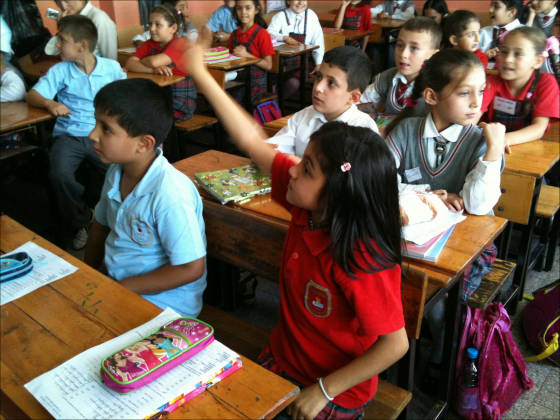
BySameer Vasta
◆ Environment surrounding the bicycle
If you ride a bicycle in the Netherlands university city where everyone admiresGroningenThe bicycle infrastructure is extremely advanced, for example, it is equipped with 10,000 bicycle parking spaces in the basement of the station, where it can be parked at the entrance and displayed at the electronic counter.
Also, the bicycle storage space in the Netherlands is very unique, it is possible to park anywhere in a predetermined place such as off-school, office building, shop front. However, if you lock in the wrong place, the bicycle will be removed even if you cut the chain and you will pay a fine of 25 euros (about 3200 yen) or more.

ByThomas Hawk
As cycling is so common in the Netherlands, Holligan asked the people in the town whether it was a cyclist and it was said that he was angry that it was "not a cyclist, but a Dutchman."
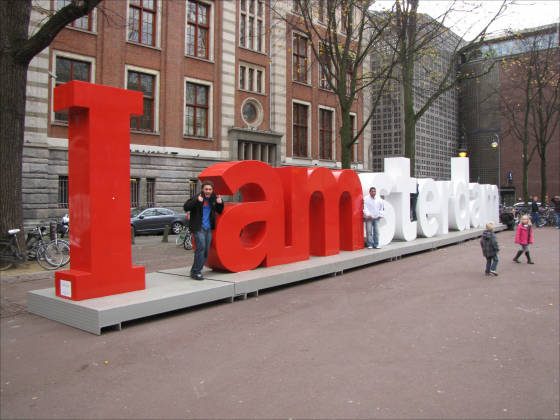
ByBen
The Dutch tend not to wear a helmet thanks to the cycle traffic rules that protect them and the infrastructure designed for bicycles. If you see a person riding a bicycle by wearing a helmet in the Netherlands it will be a tourist or a professional cyclist. Even travelers who are not professional are well able to travel throughout the country in a short time if the Dutch land famous for being flat is used.
◆ Attachment not attachment
They ride a bicycleReliable friends traveling together the adventure of lifeIt is considered. In this relationship, it is important to be long-socialized. Older friends are better. It is not unusual for a bicycle to come from behind while making rattle and rattle from the muddy on the wheel. Rather, the old bicycle that is frined and frustrated has a status as a proof of long lasting affection.
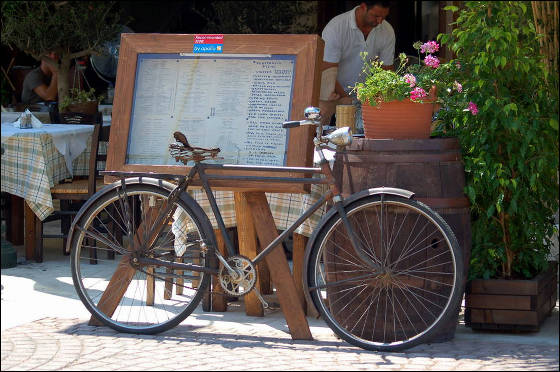
ByRobert Wallace
◆ It is a right and not a power
The fact that everyone rides a bicycle and an acquaintance is riding a bicycle means having more empathy when it is necessary to share the way.
Cyclists are expected to respect and adhere to traffic rules. If you drive recklessly, pass the wrong place or ignore the red light, you may be fined. If you do not turn on the light at night, the police officer (who also usually rides a bicycle) will cut off a foul ticket of 60 euros (about 7700 yen). Also, if there is no reflector that is obliged to be worn by the Dutch law, even more fines will be imposed.
Of course the accident still happens. However, in a traffic accident involving a bicycle, the insurance company consults the Dutch safety code 185 which is called "strict liability". It is often misunderstood as a "law to impose crime", but the law essentially means that "the driver must pay at least 50% of monetary damages on cyclists and bicycles" about. In other words, this law protects bicycle enthusiasts.
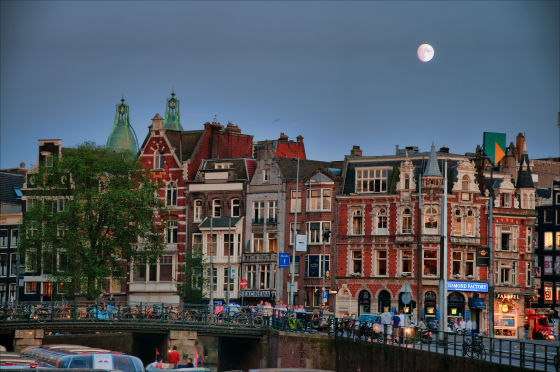
ByWerner Kunz
Holligan says that if you ride a bicycle in the Netherlands you feel strongly protected and you will have a very pleasant experience. There is a danger on the street. However, it is only in the extremely rare case that the other party is loading heavy luggage and furthermore the intersection is poor design but it is dangerous driving. Why do not you once become a charriderman in the Netherlands.
Related Posts:
in Note, Posted by darkhorse_log



